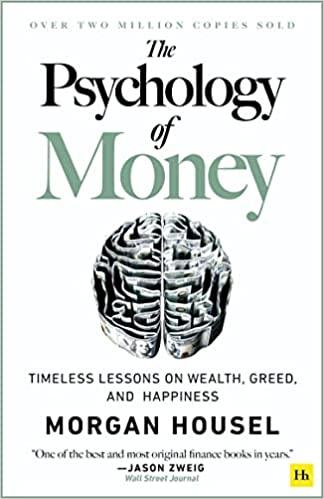Question
MULTIPLE CHOICE. Choose the one alternative that best completes the statement or answers the question. 1) What information is contained in the insuring agreement of
MULTIPLE CHOICE. Choose the one alternative that best completes the statement or answers the question.
1) What information is contained in the insuring agreement of an insurance policy? 1) _______
A) a list of the property, losses, and perils that are not covered
B) a summary of the major promises of the insurer
C) a description of the property or life to be insured
D) a summary of the obligations of the insured
2) Which of the following statements about the definition of the insured is (are) true?
I. In some cases, a person who is not specifically named may be classified as an insured.
II. Under no circumstances can more than one person be named as an insured. 2) _______
A) I only B) II only C) both I and II D) neither I nor II
3) The deductible used for automobile collision losses is an example of a(n) 3) _______
A) aggregate deductible. B) straight deductible.
C) corridor deductible. D) elimination period.
4) David owns a commercial building with a replacement cost of $4 million. The building is insured on a replacement cost basis for $3 million under a fire insurance policy that has an 80 percent coinsurance clause. How much will David collect if the building sustains a covered fire loss with a replacement cost of $320,000? 4) _______
A) $300,000 B) $320,000 C) $275,000 D) $266,667
5) Lisa has three fire insurance policies on her office building. The policy from company A is for $400,000, and the policies from companies B and C are for $100,000 each. If Lisa has a $360,000 loss, how much of the loss will be covered by each policy if the loss is settled on a pro rata basis by the insurers? 5) _______
A) each policy: $120,000
B) policy A: $160,000; policies B and C: $100,000 each
C) policy A: $360,000; policies B and C: nothing
D) policy A: $240,000; policies B and C: $60,000 each
6) Laura's major medical insurance policy includes a $500 deductible and an 80-20 coinsurance clause. Laura was hospitalized and her covered medical expenses were $10,500. How much of the $10,500 will be paid by the insurer under Laura's major medical policy? 6) _______
A) $10,000 B) $7,500 C) $8,000 D) $7,900
7) The human life value is defined as the 7) _______
A) future value of the family's share of a deceased breadwinner's future earnings.
B) present value of a deceased breadwinner's future gross income.
C) future value of a deceased breadwinner's past earnings.
D) present value of the family's share of a deceased breadwinner's future earnings.
8) Julian, age 45, would like to determine how much life insurance to purchase using the human life value approach. He assumes his average annual earnings over the next 20 years will be $40,000. Of this amount, $20,000 is available annually for the support of his family. Julian will generate this income for 20 more years and he believes that 5 percent is the appropriate interest (discount) rate. The present value of one dollar payable for 20 years at a discount rate of 5 percent is $12.46. What is Julian's human life value? 8) _______
A) $400,000 B) $360,800 C) $184,600 D) $249,200
9) The net amount at risk for an ordinary life insurance policy is the difference between the 9) _______
A) face amount of the policy and the total premiums that have been paid.
B) present value of future benefits and the present value of future premiums.
C) face amount of the policy and the legal reserve.
D) annual premium and the annual policyholder dividend.
10) All of the following statements about the conversion of a term policy are true EXCEPT 10) ______
A) Under an original age conversion, the policyowner must pay a financial adjustment in addition to the premium for the new policy.
B) Under an attained age conversion, the premium is based on the insured's attained age at the time of conversion.
C) Most insurers require original age conversion to take place within a specified period (5 years, for example) of the issue of the term policy.
D) Evidence of insurability is required before a conversion is permitted.
11) All of the following statements about universal life insurance are true EXCEPT 11) ______
A) The policyowner can add to a policy's cash value at any time subject to policy guidelines.
B) Interest is credited to the policy's cash value each month.
C) Any withdrawal of a policy's cash value reduces the amount of the death benefit.
D) Interest credited to a policy's cash value is taxable for the policyowner in the year credited.
12) All of the following statements about ordinary life insurance are true EXCEPT 12) ______
A) The face amount of the policy is paid if the insured lives to age 65.
B) Premiums are level throughout the policy period.
C) There is a build-up of cash value that can be borrowed by the policyholder.
D) It offers the policyholder the flexibility to meet a wide variety of financial objectives.
Step by Step Solution
There are 3 Steps involved in it
Step: 1

Get Instant Access to Expert-Tailored Solutions
See step-by-step solutions with expert insights and AI powered tools for academic success
Step: 2

Step: 3

Ace Your Homework with AI
Get the answers you need in no time with our AI-driven, step-by-step assistance
Get Started


